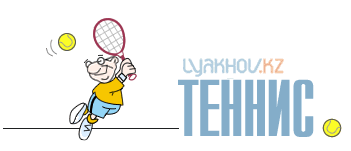
|
KAZAKHSTAN`S EDEN OF APPLES MAY ALSO BE THEIR SALVATIONScientist Sees a Stock That May Yield Hybrids Largely Resistant to Disease
The 89-year-old scientist points to some trees. Unremarkable in appearance, they are anything but. Thousands of years ago, scientists say, the first apples as we know them today appeared in the Tien Shen, and these are their descendants. The survival of the original apple is not a mere historical footnote. Mr. Jangaliyev is one of the many leading experts who believe that Kazakhstan's primeval forests may one day help to save the $50 billion-a-year global apple industry. For those who don't know that the apple industry is in need of Kazakh assistance, the problem goes back some 6,000 years. That's when fruit naturally similar in quality to store-bought American varieties appeared around present-day Almaty, which means "Father of Apples" in the Kazakh language. Travelers passing through spread the fruit east and west, thus making apples a popular fruit. But the proliferation ultimately wreaked genetic havoc. Today, about 90% of the apples eaten around the world are the ultimate offspring of just two parent trees, scientists say, producing a gene pool so shallow that awful apple scourges have resulted: apple scab, cedar apple rust and fireblight, not to mention powdery mildew. Factor in bad weather and increased competition from China, and the U. S. apple industry has lost $1.7 billion in the past seven years, says James Cranney Jr. of the U. S. Apple Association. U. S. apple growers, he says, are "in a recession, if not a depression." Apple diseases are a rarity in the never-cultivated trees of the Tien Shen, where a plethora of apple genes developed over several thousand years of isolation from the rest of the world's apples. Today, experts are looking for apple salvation in the forests here, which are vigorously defended by Mr. Jangaliyev, Kazakhstan's pre-eminent apple expert. "This is a unique resource for the planet", says Herb Aldwinckle, an apple expert at Cornell University, the main U. S. repository of apple knowledge. "We have found that the native apples of Kazakhstan have a wealth of disease resistance", he says. Mr. Jangaliyev was raised an orphan here after his father died and Soviet authorities exiled his mother to Russia. He became interested in apples in the 1930s, when a college genetics professor sent him to study the mountain forests. When Stalinist repression and famine struck, the professor dispatched him to safety in a Moscow scientific institute, where in 1941 he defended a doctoral dissertation on the diversity of Kazakhstan apple genes. Back in Almaty after fighting in Europe alongside U. S. allies in World War II, he studied apple genes in relative obscurity. Like the rest of the Soviet Union, Almaty was largely shut off from the rest of world. All that changed in 1989. That's when Mr. Aldwinckle, the Cornell professor, wangled a rare visa to Kazakhstan. Mr. Jangaliyev met him at Almaty Airport and, a few get-acquainted vodka shots later, the two men were off on a four-week apple connoisseur's tour. Mr. Jangaliyev showed his first Western visitor thousands of acres of wild apple forests that are home to Malus Sieversii, the apple variety that scientists say is the forefather of most apples eaten around the world. What they didn't see was much disease, even though none of the trees appeared ever to have been treated with chemicals. What they did see were apples that "closely resembled what we buy in the market", says Mr. Aldwinckle. When Mr. Aldwinckle returned to Cornell with Kazakh stems and seeds, he triggered a world-wide sensation. Hearing of the trip, German apple experts complaining about apple scab and apple rust asked whether they, too, could test Mr. Jangaliyev's apple genes. South Africans wanted to know whether the genes might spell an end to wooly apple aphids. The U. S. Agricultural Research Service, which sponsors some Cornell apple research, organized a string of follow-up tours. "It was the experience of my life", says Taaibos Human, a South African breeder who went in 1995. The interest stemmed from how most staple fruits and vegetables spread over history, originating in one place -- radishes in China, for instance, and cranberries in North America. Scientists believe that by going to a fruit's place of origin, they can find genes that developed over the intervening centuries, and from them they can produce super-resistant hybrids. In the case of apples, among the places they reached after leaving Kazakhstan was America, ultimately producing the Red Delicious and Golden Delicious varieties, which are the parents of about 90% of the apple hybrids people eat, scientists say. The Red Delicious was hybridized into the Fuji and the Empire, and the Golden Delicious into the Gala, the Jonagold, the Mutsu, the Pink Lady and the Elstar, says James Luby, an expert at the University of Minnesota. Varieties may be tastier than Delicious, but inbreeding has promoted diseases that have become ever harder to contend with. Growers cater to consumers put off by the slightest imperfection, so U.S. farmers spray their apples against pests and disease about 10 times a year, on average. South African growers spray up to 50 times annually. With many health-conscious consumers demanding unsprayed fruit, growers have sought ways to prevent disease that don't involve pesticides. Scientists see Kazakh apple genes as a way to produce disease-resistant apples that don't need nearly as much spraying. A new hybrid wouldn't suffer the fate of today's apples anytime soon, scientists believe, because it would have Kazakhstan's time-ripened disease protection. But pulling that off will be harder than it sounds. Scientists say they'll need 25 years or more to produce a successful new variety. That's how long it takes to grow and test a hybrid before going to market. The pace of the work makes Mr. Jangaliyev impatient. "Mount your horses", he says, ordering passengers into his SUV for a tour of laboratories and breeding farms he supervises. Mr. Jangaliyev's current preoccupation is safeguarding the forest as a natural incubator of newer genes resistant even to currently unknown apple diseases. Soviet authorities cleared most of the apple forest that once choked Almaty and, since the 1991 Soviet breakup, Kazakhstan's oil wealth has spawned more forest-clearing for luxury cabins. The result is that the forest has shrunk to about 10,000 acres today from about 125,000 acres in the 1940s, according to the United Nations. That especially angers Mr. Jangaliyev, who spies a clear-cut hilltop where someone has built a house. "Why on earth does he need a villa?" he asks. He has little tolerance for people who don't cherish the forest. "Nothing", he says, "is more valuable than a gene".
© By STEVE LEVINE (steve.levine@wsj.com)
ЯБЛОЧНЫЙ ЭДЕМ КАЗАХСТАНА МОЖЕТ СПАСТИ МИРОВУЮ ЯБЛОЧНУЮ ИНДУСТРИЮ
Джангалиев — один из многих ведущих экспертов, которые полагают, что первозданные леса Казахстана могут помочь сохранить мировую яблочную индустрию. Для тех, кто не в курсе, сообщим: казахстанским яблокам более 6 тысяч лет. Тогда там, где теперь стоит город Алматы, название которого переводится с казахского языка как «Отец яблок», появились фрукты, очень похожие на те, что сегодня продаются в американских супермаркетах. Путешественники развезли яблоки на запад и восток, и они стали одним из самых популярных фруктов. Однако распространение по миру и культивация яблочных деревьев немедленно привели к ухудшению генной структуры. Сегодня около 90% яблок — прямые потомки всего двух деревьев-родителей, и это провоцирует различные заболевания, например, рак, милдью, плесень и др. В результате плохих погодных условий и конкуренции со стороны Китая за последние 7 лет американская яблочная индустрия потеряла около 1,7 млрд долларов. Однако в горах Тянь-Шаня заболевания яблочных деревьев, никогда не подвергавшихся культивации и обработке химикатами, большая редкость. Генная структура яблок развивалась здесь в изоляции от мира на протяжении нескольких тысяч лет. Сегодня ученые считают, что спасение яблок всего мира нужно искать в этих диких садах, потому что местные казахстанские яблоки имеют потрясающую сопротивляемость болезням. Джангалиев вырос сиротой — его отец умер, а мать советские власти выслали в Россию. Он заинтересовался яблоками в 1930-х, когда профессор генетики в университете направил его изучать горные яблочные сады. с началом сталинских репрессий и голода профессор отправил его в относительно безопасное место — Московский научный институт, где в 1941 году он защитил докторскую диссертацию по генетике казахстанских яблок. Вернувшись в Алматы после Второй мировой войны (он сражался в Европе), Джангалиев долгие годы изучал яблочные гены, находясь в изоляции от достижений остального мира. Все изменилось в 1989 году. Тогда профессор Корнелльского университета господин Олдуинкл получил визу в Казахстан. В Алма-атинском аэропорту его встретил Джангалиев, и на протяжении четырех недель ученые совместно изучали и осматривали тысячи акров диких яблочных садов, где растет, в частности, Malus Sieversii, тип яблок, который, по словам ученых, является предком большинства яблок мира. Вернувшись в Корнелльский университет, Олдуинкл продемонстрировал сенсационные материалы. Ими заинтересовались немецкие специалисты, ЮАР. В Казахстан потянулись новые экспедиции. Ученые полагают, что, вернувшись к месту происхождения тех или иных растений — редиса в Китае, клюквы в Северной Америке, — они смогут найти гены, которые помогут создать суперстойкие гибриды. В Америку попали два главных сорта — Red Delicious и Golden Delicious, из которых были выведены многообразные гибриды. Гибриды, возможно, и вкуснее, однако узкородственное разведение привело к появлению заболеваний. Предполагается, что с помощью казахстанских яблок можно создать гибрид, которому не будет грозить судьба сегодняшних яблок, потому что у него будет иммунитет казахстанских. Однако реализовать этот проект не так легко, как кажется. Ученые говорят, что им потребуется как минимум 25 лет на то, чтобы вырастить гибрид, прежде чем он отправится на рынок. Джангалиев в нетерпении. Сейчас он занимается тем, что охраняет дикие сады, в которых некогда утопал Алматы. Советские власти вырубили немало яблочных садов, а с 1991 года под престижные дома было вырублено еще больше яблочных деревьев. По данным ООН, площадь диких яблочных садов около Алматы сократилась со 125 тысяч акров в 1940-х годах 10 тысяч акров. Это особенно злит Джангалиева. Глядя на холм, где кто-то построил дом, он говорит: «Какого черта ему потребовалась вилла?». Он не выносит людей, которые не дорожат этими яблочными садами. «Нет ничего ценнее, чем ген», — утверждает ученый.
© Стив ЛИВАЙН
|
||||||||||||||||||||||||||||||||||||||||||||||||||||||||




